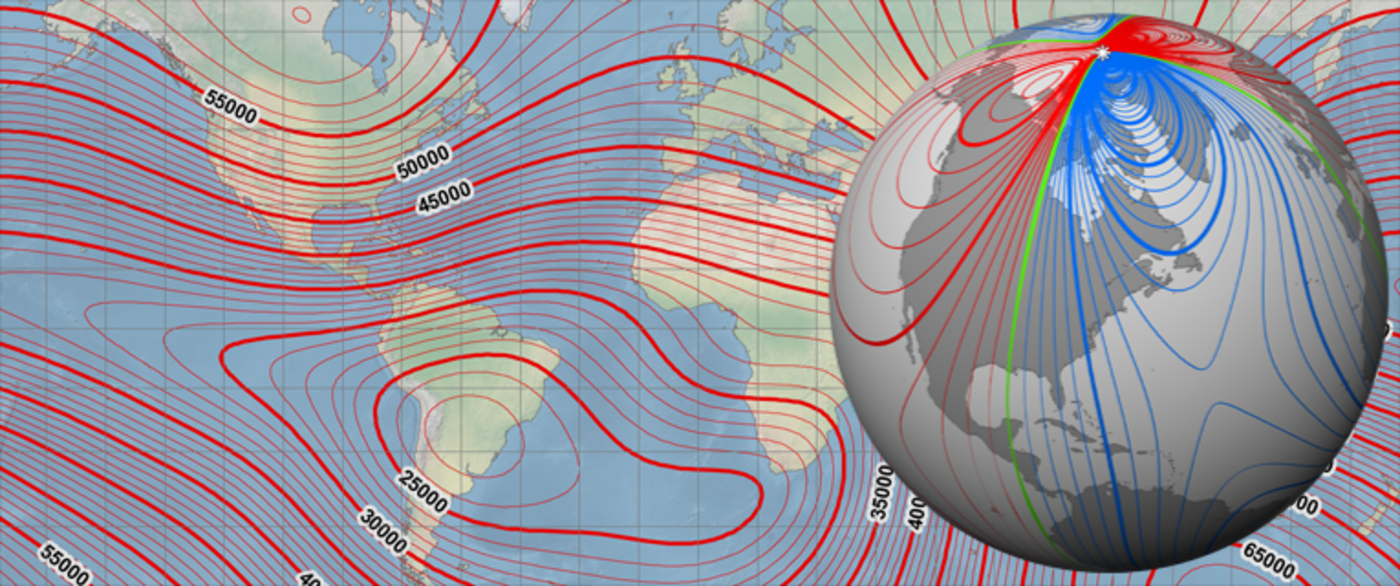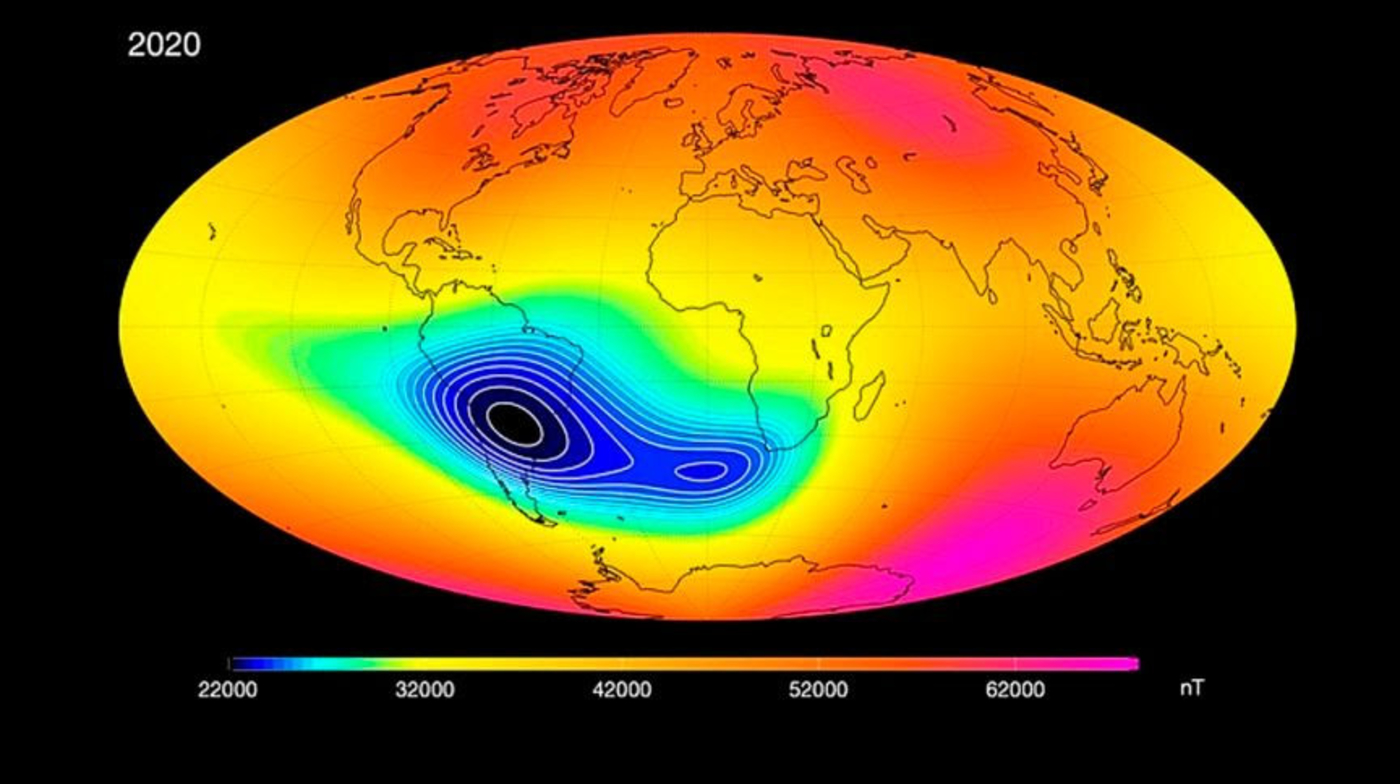
NOAA / Disclosure
The US National Oceanic and Atmospheric Administration NOAA recently released The latest report on the state of the Earth’s magnetic field, using data from the Global Magnetic Model 2020 (WMM2020) and a more recent model from data collected by the European Space Agency’s (ESA) Swarm satellites through September 2021.
According to NOAA, nonlinear changes in Earth’s magnetic field have remained small over the past two years. Since 2020, the north magnetic pole has moved (south, respectively) at an average speed of 44 km/year and without any noticeable change in direction. These movements led to subtle changes in the shape and location of the areas of blackout (WMM), where the accuracy of the compass is lower.
The South Atlantic anomaly, where the geomagnetic field strength is lower, continued to increase by about 50 nm at sea level, and moved westward with its center shifting about 50 km at sea level in the direction of South America.
Unlike Mercury, Venus, and Mars, Earth is surrounded by an enormous magnetic field called the magnetosphere. The magnetosphere, created by powerful dynamic forces at the center of our world, protects us from the erosion of our atmosphere by solar winds (charged particles constantly ejected by our sun), erosion and particle radiation from coronal mass ejections (huge clouds of energy, magnetized solar plasma and radiation) and cosmic rays from space abyssal.
The magnetosphere plays a guardian role, expelling this unwanted energy that is harmful to life on Earth, keeping most of it at a safe distance from the Earth’s surface in twin cake-shaped regions called the Van Allen belts.
Most noticeable is the acronym AMAS, which stands for the South Atlantic Magnetic Anomaly. It is a phenomenon that remains a mystery to science and someone in social networks often wonders if it is interfering with the climate in Brazil and South America although there is no evidence so far.

NOAA / Disclosure
AMAS, which grows and whose center is closer to South America, is a type of delayed magnetic shielding of the Earth located over the South Atlantic Ocean, more specifically in the southern and southeastern regions of Brazil, in a range that extends as far as Africa.
But how might this lack of shields high over the South Atlantic affect life on our planet? One result we already understand is the role of satellites in Earth’s orbit. When passing through the region with low background protection, the damage caused by the flux of cosmic radiation can appear.
Therefore, the anomaly is monitored by space agencies such as the European Space Agency, NASA, and more recently by Brazil, which launched the NanosatC-BR2 nanosatellite with this mission. This is explained by Marcel Nogueira, a physician in physics, and a researcher at the National Observatory of Agência Brasil.
“Why are space agencies interested in this anomaly? Since this region has a weaker field, the particles of the solar wind enter this region more easily, the flow of charged particles passing through that region is more intense,” Nogueira explains.
This means that when satellites pass through this area, they sometimes have to stay on standby, and temporarily turn some components off to prevent losing the satellite, or any equipment that might burn out. Because the radiation, especially electrons, in this region is very strong. So it is in the interest of space agencies to constantly monitor the evolution of this anomaly, especially at this central scale,” he adds.
Imagine a day without internet, cell phone, GPS or communication? If the phenomenon affects the satellites responsible for communication and geolocation systems, it can affect our technological lives.
“If people study storms as well, we are able to improve and protect the electricity distribution system, avoiding blackouts. Because in the daily life that we live today, very dependent on technology, any kind of blackout in the electrical system, in any country, generates Millions or even billions of dollars in losses, says the researcher: It is something very important for our technological life today.
In Brazil, in addition to the nano-satellite launched into space in partnership with the Russian Space Agency, there are also two magnetic observatories that focus, among other tasks, on answering questions about this anomaly: Vasoras, in Rio de Janeiro, and Tatoka, in the Amazon .
Both are part of the global network of magnetic observatories, Intermagnet. The lack of conclusions sparks curiosity about the South Atlantic anomaly. This is the reason for its popular association with events such as those already recorded in the Bermuda Triangle. But Marcel prefers to say that this phenomenon presents a much more technical challenge and that there are no conclusions indicating the dangers of cosmic radiation fluxes in human life.